Key takeaways:
- Understanding audience analytics enables tailored content that resonates with readers, enhancing engagement and community connection.
- Key metrics such as bounce rate and average session duration are critical for refining content strategies and understanding audience behavior.
- Personalized engagement and feedback loops foster community, while data-driven strategies like A/B testing can significantly boost interaction levels.
- Future trends in audience analytics emphasize AI for predictive insights, the importance of data privacy, and the integration of cross-platform data for a comprehensive understanding of audience interactions.
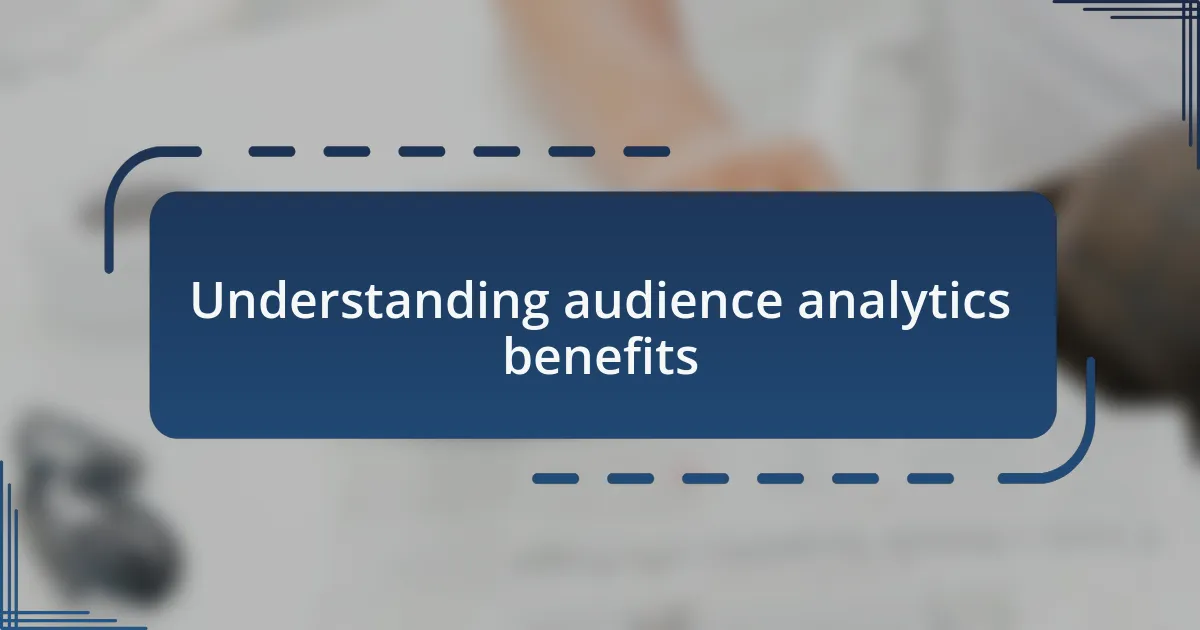
Understanding audience analytics benefits
One of the most significant benefits of understanding audience analytics is that it allows news media to tailor content specifically to the interests and needs of their readers. I remember when I first dove into the numbers after launching a series of articles focusing on local politics; the insights revealed not only which topics engaged our audience, but also when they preferred to read. It was eye-opening to see how timing and relevance influenced engagement—that simple realization altered our entire editorial strategy.
Engaging with audience analytics can sometimes feel overwhelming, but think about it: how else can you truly know what resonates with your readers? I recall a time when a detailed analysis of reader demographics led us to create a feature that combined local history with current events. The response was incredible, demonstrating that when you speak directly to your audience’s interests, they feel more connected and valued.
Moreover, audience analytics help foster a sense of community by addressing specific concerns and preferences. For instance, after analyzing feedback, we discovered a significant interest in environmental issues within our readership. By prioritizing those stories, not only did we increase engagement, but we also established ourselves as a trusted source, inviting readers to participate in conversations that matter to them. It’s fascinating how data can bridge the gap between the news provider and the audience.
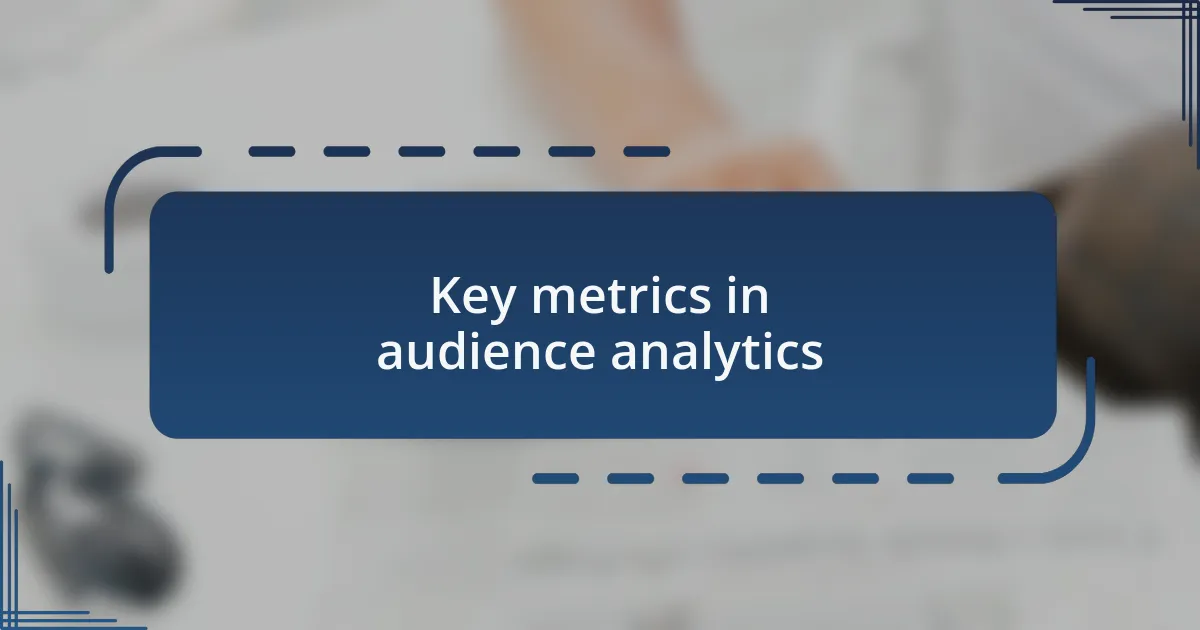
Key metrics in audience analytics
Key metrics in audience analytics can reveal crucial insights into how readers interact with content. One metric that stands out to me is the bounce rate—essentially the percentage of visitors who leave the site after viewing just one page. I vividly remember analyzing a particular article that had a high bounce rate. It prompted me to rethink its headline and imagery, and upon making adjustments, we saw the bounce rate drop significantly. Isn’t it fascinating how a simple tweak can lead to deeper engagement?
Another essential metric is the average session duration, which indicates how long visitors spend consuming content. I once noticed that during a specific news cycle, our readers lingered much longer than usual. It made me wonder what elements captivated them. Upon review, the articles that featured multimedia content like infographics and videos actually held attention longer, underscoring the value of diverse formats in storytelling.
Lastly, tracking sources of traffic is vital. I recall a surprising spike in visitors coming from social media one day, highlighting how our stories were being shared in unexpected circles. This insight not only informed our distribution strategy but also led to discussions about tailoring our content even more specifically for these platforms. How often do we overlook the enormous potential of social sharing? By monitoring these metrics closely, we can continuously refine our approach and connect more effectively with our audience.
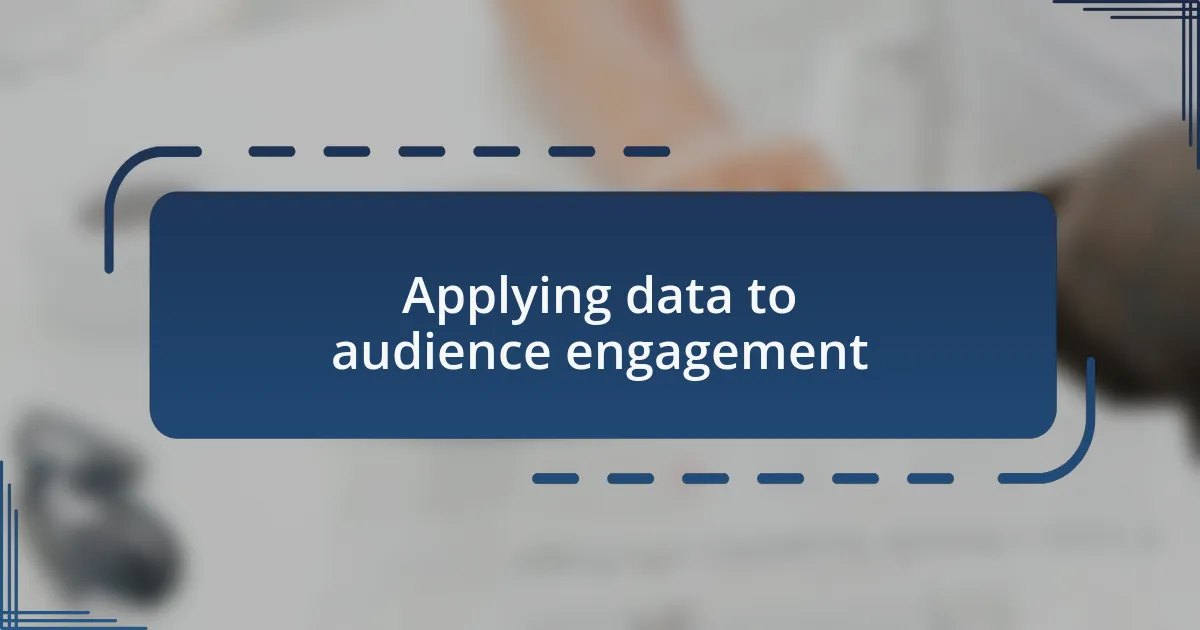
Applying data to audience engagement
To truly engage with our audience, I believe it’s essential to leverage the data at our disposal. For instance, I once studied the click-through rates on our newsletters and noticed that personalized subject lines significantly boosted engagement. This insight compelled me to focus on crafting tailored content that resonates more deeply with our unique audience segments. Isn’t it incredible how a personalized touch can transform engagement levels?
Another aspect I’ve found impactful is the feedback loop created by audience interactions, such as comments and shares. I clearly remember launching a poll on a trending topic, which not only encouraged responses but also revealed deeper interests among our audience. This experience taught me that directly involving readers can foster a sense of community and intimacy, often sparking retweets and further discussions. Who knew that our audience craved some say in the narrative?
Moreover, I’ve seen the power of A/B testing when it comes to refining content strategies. There was a time when we experimented with different headlines and images on social media promotions, tracking which versions drove more traffic to our site. The results were eye-opening! This practice not only increased clicks but also allowed us to align our content more closely with audience preferences. Isn’t it empowering to know that tuning into our audience can lead to substantial growth?
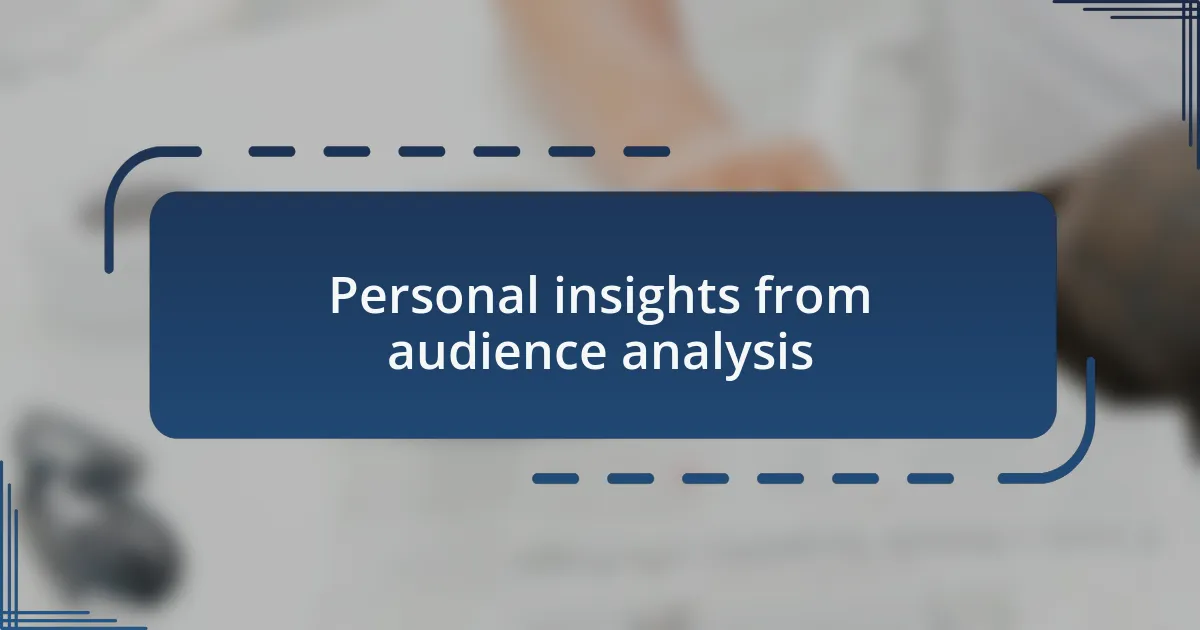
Personal insights from audience analysis
One of the most enlightening experiences I’ve had with audience analysis was when we examined user demographics more closely. I distinctly recall a moment when I discovered that a sizable portion of our readership was under 30, which completely shifted my perspective on content delivery. Recognizing that younger audiences often prefer bite-sized, visually engaging content led me to experiment with infographics and quick videos, and the uptick in interactions was like a light bulb going off. Doesn’t it strike you how vital it is to recognize the audience’s age and preferences in shaping our strategies?
Diving into audience behavior patterns also revealed remarkable insights. After analyzing the times of day our readers were most active, I can remember adjusting our publishing schedule to coincide with these peak hours. The impact was astounding; engagement soared, and I felt validated in my belief that timing is crucial in communication. Have you ever noticed how a message can resonate more deeply when it arrives at just the right moment?
I also can’t overlook the emotional response analysis we conducted through engagement metrics. One experience that stands out is when we tracked the articles that sparked the most passionate discussions. The level of engagement on topics like mental health and climate issues revealed not just interests but passions that we could tap into. This taught me the importance of not just what we share, but how we resonate emotionally with our audience. Isn’t it amazing how understanding emotions can open a dialogue that goes beyond just information sharing?
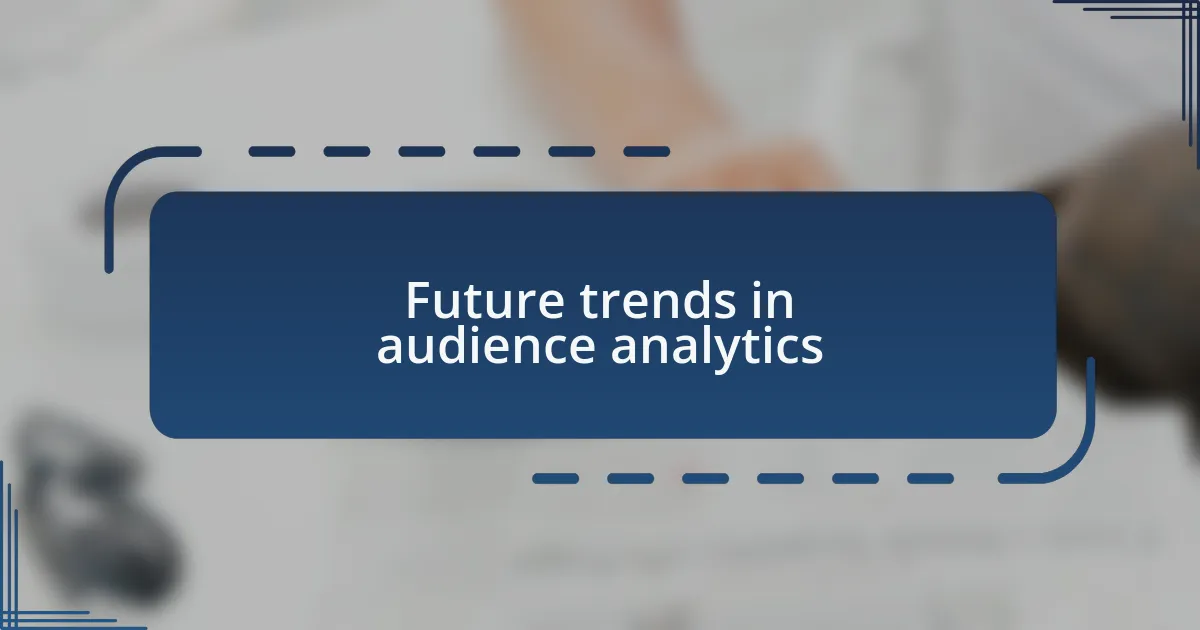
Future trends in audience analytics
As I look ahead, one trend that’s already making waves is the increasing use of artificial intelligence in audience analytics. I remember attending a conference where an industry expert shared how AI can now predict content trends based on real-time data. Imagining an analytics tool that not only shows what topics are trending but also anticipates what will resonate with my audience is exciting. Isn’t it fascinating to think that our strategies could become even more proactive rather than just reactive?
Another emerging trend I find intriguing is the emphasis on data privacy and ethical analytics. After the insightful discussions around GDPR, I realized that our approach to collecting and using audience data will need to evolve. I often ponder whether we can balance targeted content delivery with respect for our readers’ privacy. This could lead to deeper trust and loyalty, which is invaluable in today’s media landscape. How can we ensure that our analytics practices also enhance our readers’ experience rather than intrude upon it?
Finally, I see a growing importance of integrating cross-platform data for a holistic view of audience interactions. I vividly recall a project where we combined insights from our website, social media channels, and email newsletters. The deeper understanding of our audience’s journey across various platforms significantly shaped our content strategy. Just imagine: what if we could tailor our narratives based on a complete picture of audience behavior instead of isolated metrics? This could truly revolutionize the way we engage with our readers.